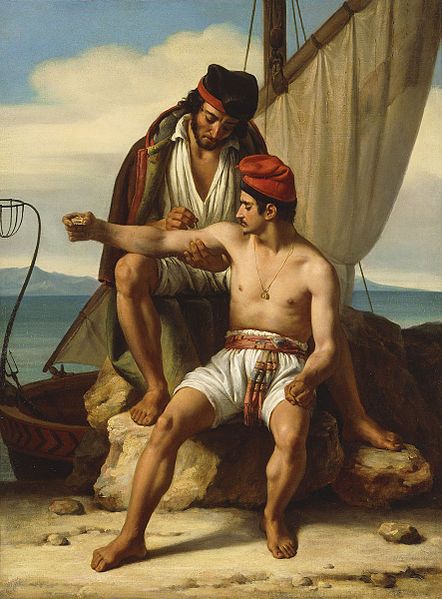Sailor tattoos are traditions of tattooing among sailors, including images with symbolic meanings. These practices date back to at least the 16th century among European sailors, and since colonial times among American sailors. People participating in these traditions have included military service members in national navies, seafarers in whaling and fishing fleets, and civilian mariners on merchant ships and research vessels. Sailor tattoos have served as protective talismans in sailors' superstitions, records of important experiences, markers of identity, and means of self-expression.
Aboard the USS New Jersey, 1944
On USS Ronald Reagan, 2016
"Figures printed on the arms of our Tarentine sailors" from Voyage en Italie, en Sicile et à Malte, 1778 by Louis Ducros
Le tatouage du matelot by Constantin Jean Marie Prevost, 1830
A tattoo is a form of body modification made by inserting tattoo ink, dyes, and/or pigments, either indelible or temporary, into the dermis layer of the skin to form a design. Tattoo artists create these designs using several tattooing processes and techniques, including hand-tapped traditional tattoos and modern tattoo machines. The history of tattooing goes back to Neolithic times, practiced across the globe by many cultures, and the symbolism and impact of tattoos varies in different places and cultures.
A sailor's forearm tattooed with a rope-and-anchor drawing, against the original sketch of the design; see sailor tattoos.
An example of a tattoo design
Application of a tattoo to a woman's foot
An identification tattoo on a survivor of the Auschwitz concentration camp








